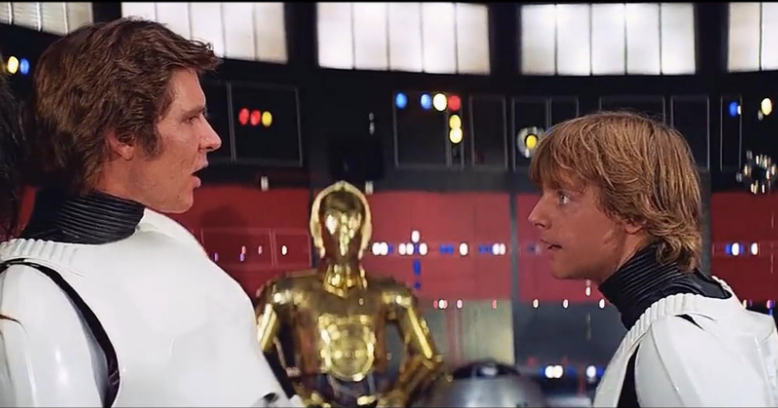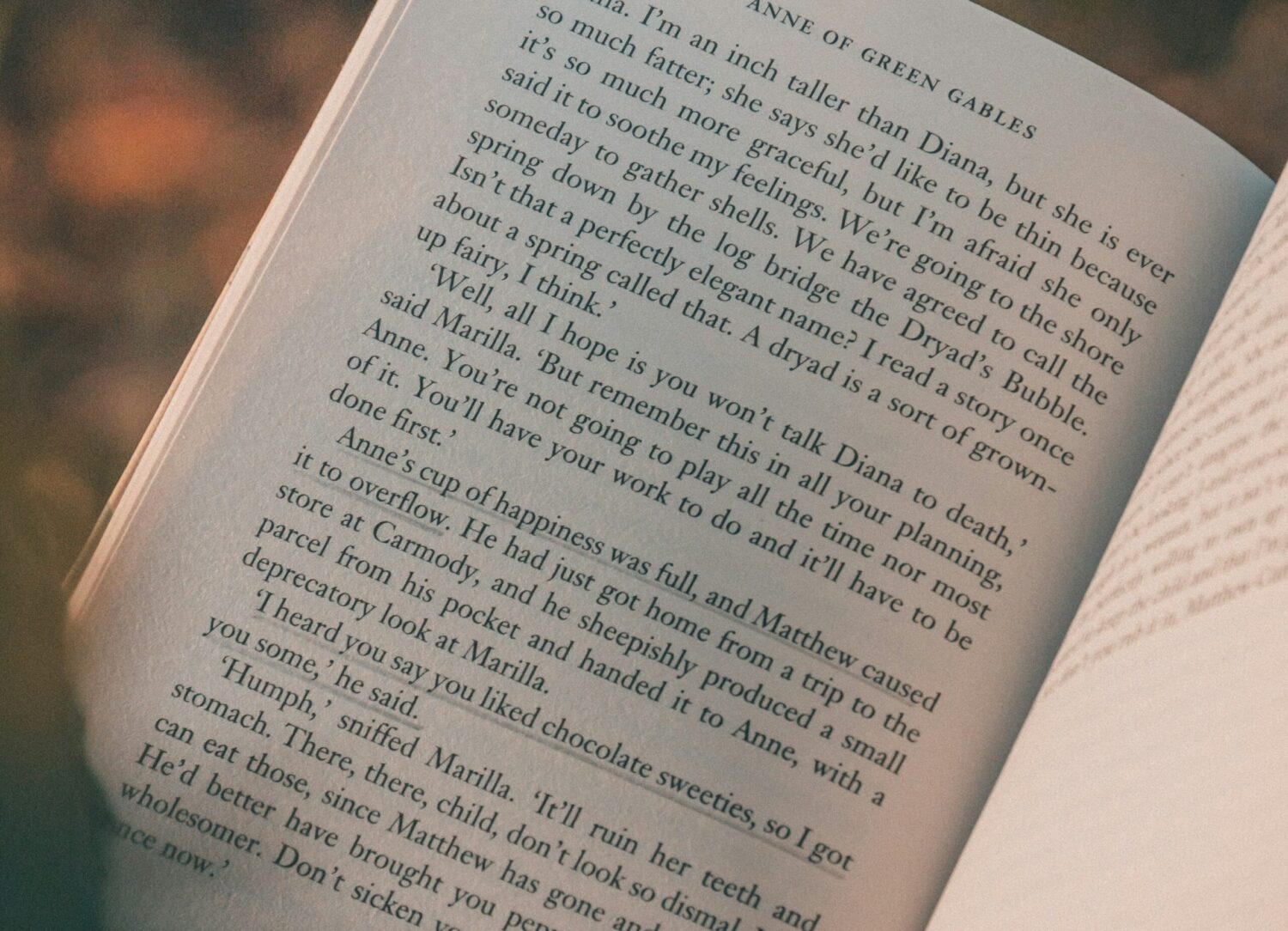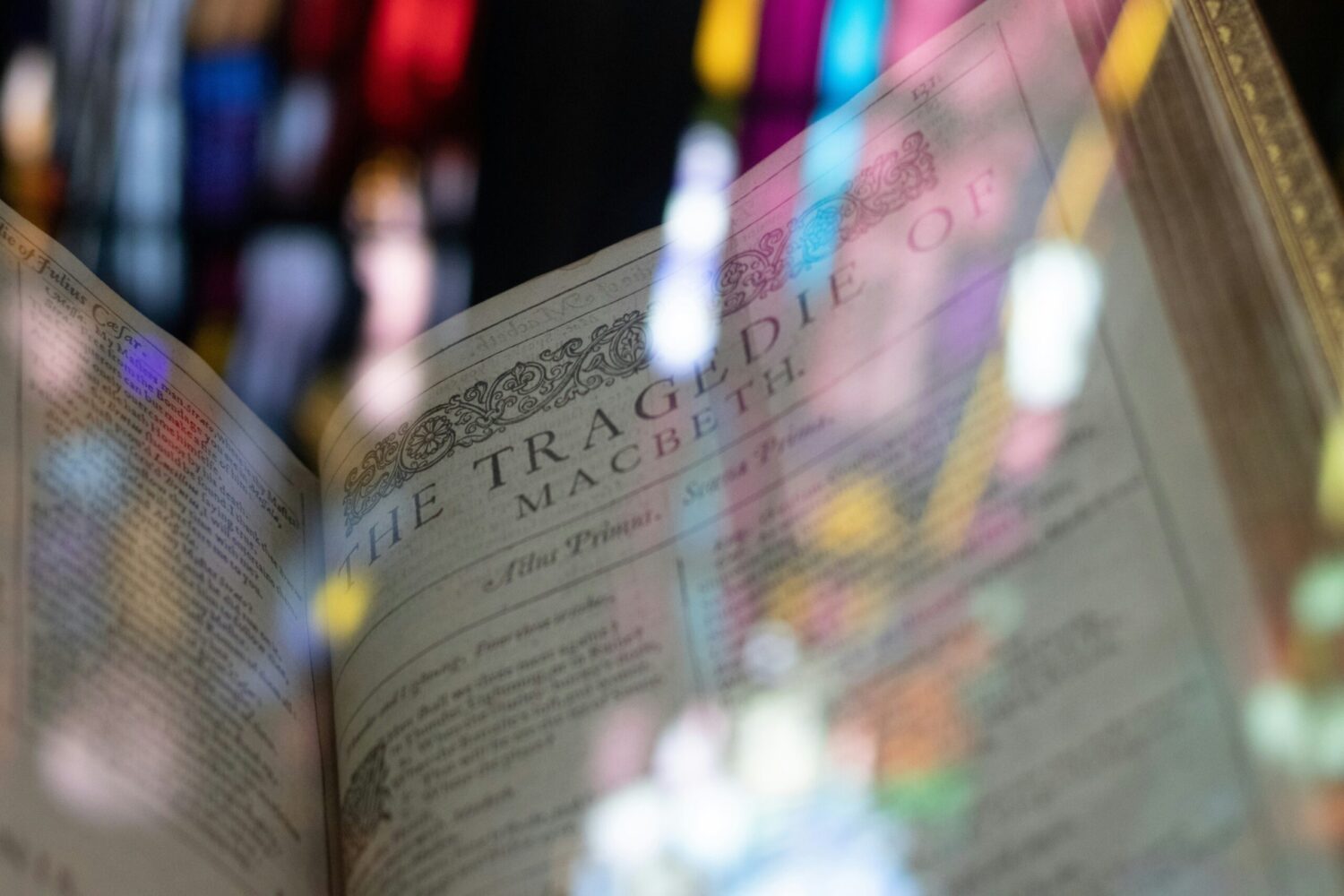
What is a Foil Character? The Secret to Making Your Characters Shine
When you’re writing your novel, you want every element of your story to shine. You want your reader to close the last page remembering your characters, your plot, and your settings, and to think “Wow! That book had some really memorable characters!”
And few ways are better at making your characters vibrant and distinct than to make them foils of each other. Foil can not only mean shiny aluminum foil, it can also mean gold foil that is used for gilding. It causes an object that might otherwise be dull to stand out brightly. And when you have two characters in your story that are completely different, they foil each other and stand out to your reader far more than they otherwise would.
As human beings, we tend to be attracted to strong contrasts. That’s why at Christmas it’s common to decorate a Christmas tree in red – red is the opposite of green on the color spectrum, which causes it to stand out beautifully on the tree. In the same vein, an artist will choose two strongly contrasting colors such as blue and orange as the dominant colors in a painting, to make it look more dramatic and memorable to the observer.
Differences create drama and interest. They cause us to notice things we otherwise may not have noticed. Which is why you should apply them to your novel as well, in the form of foil characters.
What is a foil character, exactly?

A foil character has opposite traits to another character, usually the protagonist. They are typically used to highlight certain traits of the other character by providing contrast. For example, one of your characters may be honest and upright, while another is dishonest and a thief. When you put these two characters together, the juxtaposition of these traits causes them to stand out more strongly to your reader.
In some cases you can get conflict and drama, because most likely an honest person will not agree with a dishonest character lying and thieving. These two different characters have the potential to influence each other and lead to character growth and change.
Certain traits that can be used to contrast characters are as follows:
- Cheerful/glum
- Brave/cowardly
- Loyal/disloyal
- Rash/calculating
- Rigid/relaxed
- Optimistic/pessimistic
- Wise/foolish
- Hardworking/lazy
- Gentle/harsh
Differences between characters can also extend to the physical realm (tall/short, strong/weak, etc.), differences in motivation (two characters may work the same job but one does it for money and another for fulfillment) or differences in upbringing and cultural background (royalty vs commonality).
A foil character is generally not the antagonist
While your antagonist has the job of opposing the protagonist, a foil character has the job of highlighting something specific about your protagonist. They are often the main character’s friend or acquaintance.
In Shakespeare’s play Hamlet, Laertes’s rash, angry nature brings out the fact that Hamlet is slow and indecisive when it comes to action. While Hamlet keeps overthinking the decision to kill the wrongful king, Laertes is a little too quick to action. When he suffers a loss like Hamlet does, he does not waste time mulling over what he should or should not do; rather, he immediately challenges Hamlet to a duel to avenge his loved one. However, Laertes is not the antagonist. That position goes to Claudius.
As well as encompassing characters, foils can also be part of other elements of your story.
Different types of foils in literature
Characters
This is the most obvious one, as characters can foil each other to make their traits stand out more to the reader.
Settings
Sometimes the setting itself can be a foil. In The Magician’s Nephew from C.S. Lewis’s Narnia series, the world of Charn is shown to be ancient, barren, and cruel, with a history of tyrannical rulers. Narnia is shown to be young, fresh, full of life and happiness, and to have a kind and gentle king.
Subplots
Sometimes different subplots within a story can be foils of each other. In J.R.R. Tolkien’s The Lord of the Rings, Aragorn’s story is a foil of Isildur’s. Isildur was weak and would not resist the temptation of the one Ring, leading to his destruction and the weakening of Gondor. Aragorn, on the other hand, is much more morally strong than his ancient ancestor. He is able to resist the Ring and bring courage and strength back to Gondor, and eventually becomes its new king.
Why is understanding foil characters important?
As well as highlighting different aspects of your characters, foil characters can provide conflict that carries the story forward and give rise to interesting plot and character dynamics.
For example, in the 1977 Star Wars film, we are introduced to two very different characters, Han Solo and Luke Skywalker. It’s clear from the first time we meet Han that he’s a cynical, selfish smuggler who only cares about himself and getting paid. He’s also a disbeliever in “hokey religions and ancient weapons,” or some revolution that a princess is leading.

Screenshot: Lucasfilm
Luke, on the other hand, is a farm boy who has a more optimistic and open view of life. When he hears about the Force, he accepts it as fact. While he’s a little naive and callow, he’s nonetheless intelligent and kind. And most importantly, he has an optimism and sense of honor that Han lacks, and this is where their characters contrast the most.
When Luke discovers that Princess Leia is being held prisoner on the Death Star, he wants to rescue her, but Han would rather sit around and not bother. The result is an argument that leads to Luke appealing to Han’s selfishness to convince him to help. In this scene, we find out how truly selfish Han is, and it highlights that Luke is caring, and also innovative.
And while Han equates attacking the Death Star to suicide, Luke takes a more optimistic view of the situation.
Luke is also more sensible and cautious on the Death Star while Han tends to act recklessly. In almost every way, these characters are shown to be completely different, to have different values, and to want to do different things in the same situation.
Despite these differences, it’s clear that Han actually likes the kid. He’s also not entirely content with his selfish, smuggling life. Luke’s selflessness and courage shown throughout the movie impresses Han, and in a thrilling climax, he returns to help his young friend complete his mission.
But what if they were the same?
Now, let’s suppose that instead of being the naïve, good-natured farm kid, Luke was instead snarky, cynical, and selfish like Han. On the surface, some people might think that’s a great idea. After all, a lot of people think Han is cooler than Luke, so wouldn’t it be better to make them both snarky rogues?
Actually, it wouldn’t. If these characters had been similar, we wouldn’t have gotten the conflict that makes Han’s character so interesting in this movie. The plot would have been completely different, and probably not as interesting. And the characters would have started to blend together after a while…which means neither would have been as memorable.
It’s the fact that Luke isn’t these things that compels Han’s character arc and makes them both stand out. Luke embodies the opposite traits that eventually inspire Han to become more selfless and to care about more than just money.
And if Han had been more like Luke, we might not have seen Luke get challenged as much and his strong moral compass may not have seemed as obvious.
Han wouldn’t have changed much throughout the course of the movie if he hadn’t been juxtaposed against a character as different as Luke Skywalker.
Ultimately, it’s the differences between these characters that causes the plot to work the way it does. It’s really their clash of values that makes us invested in the film.
Foil characters cause the traits of each character to become more consequential to the narrative
The fact that these characters foil each other is what initiates Han’s character arc. It also provides a test for Luke, as Han challenges his belief in the Force. And it brings out the themes of the movie, that different people can come together for a common cause and that the Force is real.
Leia, also, is very different from Han and Luke and acts as a foil in her own right, even though in this particular film she is not shown to be as instrumental in causing Han to change as Luke is.
Characters that are the opposite of each other usually end up changing or affecting each other in some way. Since characters drive plot, this can help plot points become more natural and not feel forced. When Han returns, it makes sense, because his character has begun to change.
Foil characters can add humour
It’s also interesting to note that this movie is very funny at times. And it’s not forced, quippy humour either, but humour that flows naturally from the differences in the characters.
If these characters had all been the same, they wouldn’t have been as memorable or as enjoyable. It’s their differences that makes them stand out and adds humor and vibrancy to the story.
In contrast, the Star Wars prequels lack strong foil characters. All the characters are mostly the same. Can you think of many differences between Obi-wan and Qui-gon? Or Yoda and Mace Windu, or even Anakin and Obi-wan? The lack of distinct foil characters causes the films to feel stale.
Why you should have foil characters in your story
Most obviously: it’s boring to have characters that are all the same. Differences in morals, ideals, temperament, and experiences highlight your characters’ personalities and add more natural conflict.
Foil characters add variety to your story and help develop your story’s plot, themes, and characterisations

If you wanted to explore the theme of revenge in your novel, you could start by creating two foil characters: one who thinks revenge is fine in all circumstances and one who thinks it is always wrong. You now have an engaging blueprint you can develop over the course of the story. You could even have both of the characters completely change to the opposite by the end.
If your plot is two characters discovering a brand new superpower, have one be skeptical and cautious about its use, and the other excited and thrilled about its potential. You already have the making of an interesting plot involving these two characters. Will they try to sabotage each other? Will one become the villain?
If you want to show that a character is empathetic, put them with a character who lacks empathy. If you have one that’s royalty and out of touch with common people, put them with a commoner. This character could learn and change a lot more than if they were with another royal person, and we may find out things about them that we may otherwise never have known.
Opportunities for new ideas and ways to develop your story open up when you have foil characters.
Making foil characters helps bring out their individual traits and gives them more chemistry
It’s hard to define ‘chemistry’; it’s generally something you just know is there. However, making your characters foils usually gives them more chemistry. When you have two characters together that are completely different, and even have a personality clash, their interactions tend to be far more entertaining. For example, Sherlock Holmes and Dr. Watson are completely different from each other, which leads to lots of witty banter as they contend with their differences.
Not to mention these differences can be hilarious and are great if you’re looking to add humor to your work. Much of the best humor from books and movies results from contrast and minor conflicts between characters. If all your characters are the same, chances are not only is your novel really boring, but you have no humor in it.
Making your characters foil other characters gives them purpose in your story
Every character in your story should have a purpose. Unfortunately, it can be easy to create too many characters or ones that don’t have much purpose. Making characters foils to each other can give previously weak or useless characters a stronger place in the story. It can also help develop your secondary characters.
Generally, if you think you have too many characters, it’s best to get rid of some by either erasing their existence entirely or combining two of them to make one. However, if you have one that you want to keep but doesn’t have much personality, try making them a foil to the protagonist or another one of your characters.
Examples of foil characters in literature
Marilla and Anne from L. M. Montgomery’s Anne of Green Gables

Marilla’s rigid, cold personality contrasts with Anne’s imaginative and exuberant personality. At first, Marilla is perplexed at her new little girl’s vivacious nature. As time goes on, their differences ultimately lead to character development for them both, as Marilla learns to soften and Anne learns to become more steady and down-to-earth. Eventually, they end up forming a special bond.
Macbeth and Lady Macbeth from Shakespeare’s Macbeth

When Macbeth hears the witches’ prophecy, he is fired up about the idea of becoming king, but reluctant to take action because of the consequences and the fact that he’s known as a man of honor. Lady Macbeth, on the other hand, is confident about killing the king, without any show of hesitation or compunction. She goads him into committing the deed.
However, she starts experiencing hallucinations about the murder and spirals into insanity, eventually ending her own life. Macbeth, on the other hand, becomes more cold and unfeeling as a result of guilt, and continues committing more terrible crimes. The difference in their response to guilt adds to the depth and tragedy of the story, showcasing how guilt affects people differently
Sherlock Holmes and Dr. Watson from Sir Arthur Conan Doyle’s The Adventures of Sherlock Holmes

The Adventures of Sherlock Holmes, written by Sir Arthur Conan Doyle, features two very different characters—Sherlock Holmes and Dr. Watson. Sherlock is a detective, while Dr. Watson is a retired military doctor. Mr. Holmes is remarkably astute and observant, while also being emotionally detached. His only focus is finding the culprit and he treats it as a game and an intellectual challenge.
Dr. Watson, on the other hand, doesn’t have Sherlock’s powers of observation. He is constantly amazed by his friend’s skills, and as such, provides a sounding board for the reader. Since the narrative is told from his perspective, we are as amazed at Sherlock as he is.
Unlike Sherlock, Dr. Watson is more empathetic and more aware in social situations. He gets more joy out of nature and the simple things of life, rather than being singularly minded like his friend. This contrast provides an entertaining dynamic that adds humor and a human element to the story, as well as causing some complications in their relationship.
How to create foil characters to make your story more interesting
Start by making a list of traits for each of your characters. Figure out what particular trait you want to emphasize in your main character. Do you have a side character that has the opposite trait? Can you make that character even more different to help them both stand out?
Think about what kind of arcs you want for each of your characters. Does one character have a flat arc and another a hero’s journey arc? How do the differences between the characters cause them to change?
Consider how your foil characters add dimension to your story. Do the differences add humor and interest? Do they highlight the themes you want to portray, without being overt or preachy? Do their differences affect the plot?
Find your favorite book and read it again. Can you identify foil characters? How does the author use them to develop the story and plot?
Summary
Foil characters are the secret to breathing freshness and life into your work. By integrating them into your novel, you’ll make your characters stronger. Since strong characters are the foundation of a good story, you’ll have an easier time developing your plot and themes. And while you’re looking for info on writing characters, be sure to check out this article: Want to Write More Believable Characters? Make ’em Quirky.

Author bio: Monica Shannon is a freelance writer who specialises in writing about various topics, especially the craft of writing and storytelling. She enjoys exploring different storytelling techniques and educating up and coming writers.
